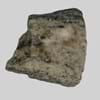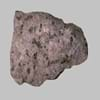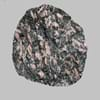Definition
Vogesite is a porphyritic alkaline igneous rock and is a variety of Lamprophyre which is dominated by essential amphibole, usually hornblende, and potassic feldspar
Anthracite is a type of sedimentary rock which is hard and is variety of coal that has high luster
Origin
Unknown
Pennsylvania, U.S.
Discoverer
Unknown
Unknown
Etymology
From the variety of Lamprophyre Greek lampros bright and shining + porphureos purple
From Greek anthrakites, from anthrax, anthrak meaning coal
Class
Igneous Rocks
Metamorphic Rocks
Sub-Class
Durable Rock, Medium Hardness Rock
Durable Rock, Soft Rock
Group
Plutonic
Not Applicable
Other Categories
Coarse Grained Rock, Fine Grained Rock, Opaque Rock
Coarse Grained Rock, Fine Grained Rock, Medium Grained Rock, Opaque Rock
Texture
Porphyritic
Amorphous, Glassy
Color
Black, Bluish - Grey, Brown, Dark Greenish - Grey, Green, Grey
Black, Brown, Dark Brown, Grey, Light to Dark Grey
Durability
Durable
Durable
Appearance
Dull, Banded and Foilated
Veined or Pebbled
Interior Uses
Decorative Aggregates, Entryways, Flooring, Homes, Interior Decoration
Not Yet Used
Exterior Uses
As Building Stone, As Facing Stone, Garden Decoration, Office Buildings, Paving Stone
Not Yet Used
Other Architectural Uses
Curbing
Not Yet Used
Construction Industry
As Dimension Stone, Cement Manufacture, for Road Aggregate, Making natural cement, Manufacture of Magnesium and Dolomite Refractories
Cement Manufacture, for Road Aggregate, Making natural cement, Steel Production
Medical Industry
Taken as a Supplement for Calcium or Magnesium
In Chemical and Pharmaceutical Industry, Manufacture of Aspirins
Antiquity Uses
Artifacts, Monuments, Sculpture
Not Yet Used
Commercial Uses
An Oil and Gas Reservoir, As a Feed Additive for Livestock, Gemstone, Metallurgical Flux, Production of Lime, Soil Conditioner, Source of Magnesia (MgO)
Alumina Refineries, Electricity Generation, Liquid Fuel, Manufacture of Soap, Solvents, Dyes, Plastics and Fibres, Paper Industry
Types
Minette, Alnoite, Camptonite, Monchiquite, Fourchite, Vogesite, Appinite and Spessartite
Semi-anthracite and Meta-anthracite
Features
Always found as volcanic pipes over deep continental crust, Host rock for Diamond, Is one of the oldest rock, Surfaces are often shiny
Helps in production of Heat and Electricity, Used as fossil fuel
Archaeological Significance
Monuments
Used
Not Yet Used
Famous Monuments
Data Not Available
Not Applicable
Sculpture
Used
Not Yet Used
Famous Sculptures
Data Not Available
Not Applicable
Figurines
Used
Not Yet Used
Formation
Vogesite formation takes place deep beneath the Earth’s surface at around 150 to 450 kilometres, and are erupted rapidly and violently.
Anthracite forms from the accumulation of plant debris in a swamp environment. When plant debris dies and falls into the swamp, the standing water of the swamp protects it from decay.
Mineral Content
Amphibole, Carbonate, Garnet, Micas, Olivine, Phlogopite, Pyroxene
Calcite, Clay, Clay Minerals
Compound Content
Aluminium Oxide, NaCl, CaO, Iron(III) Oxide, FeO, Potassium Oxide, MgO, MnO, Sodium Oxide, Silicon Dioxide, Titanium Dioxide
Carbon, Hydrogen, Nitrogen, Oxygen, Sulphur
Types of Metamorphism
Burial Metamorphism, Cataclastic Metamorphism, Contact Metamorphism, Hydrothermal Metamorphism, Impact Metamorphism, Regional Metamorphism
Burial Metamorphism, Contact Metamorphism, Regional Metamorphism
Types of Weathering
Biological Weathering, Chemical Weathering, Mechanical Weathering
Not Applicable
Types of Erosion
Chemical Erosion, Coastal Erosion, Glacier Erosion, Sea Erosion, Water Erosion, Wind Erosion
Not Applicable
Grain Size
Fine to Coarse Grained
Medium to Fine Coarse Grained
Fracture
Conchoidal
Conchoidal
Porosity
Very Less Porous
Less Porous
Luster
Subvitreous to Dull
Shiny
Cleavage
Conchoidal
Non-Existent
Toughness
Not Available
Not Available
Specific Gravity
2.86-2.87
1.1-1.4
Transparency
Translucent to Opaque
Opaque
Density
2.95-2.96 g/cm3
1.25-2.5 g/cm3
Specific Heat Capacity
Not Available
Resistance
Heat Resistant, Impact Resistant
Heat Resistant, Water Resistant
Deposits in Eastern Continents
Asia
Russia
Bangladesh, Burma, Cambodia, China, India, Indonesia, Kazakhstan, Malaysia, Mongolia, Pakistan, Turkey, Vietnam
Africa
Angola, Botswana, Cameroon, Ethiopia, South Africa
Botswana, Kenya, Morocco, Mozambique, South Africa, Tanzania
Europe
England, Hungary, Iceland, United Kingdom
Belgium, Bulgaria, England, France, Germany, Greece, Hungary, Kosovo, Netherlands, Norway, Poland, Romania, Serbia, Slovakia, Slovenia, The Czech Republic, Ukraine, United Kingdom
Others
Antarctica, Greenland
Not Yet Found
Deposits in Western Continents
North America
Canada, Mexico, USA
Canada, Mexico, USA
South America
Argentina, Colombia, Ecuador
Brazil, Chile, Colombia, Venezuela
Deposits in Oceania Continent
Australia
New South Wales, New Zealand, Queensland, South Australia, Western Australia
New South Wales, Queensland, Victoria
All about Vogesite and Anthracite Properties
Know all about Vogesite and Anthracite properties here. All properties of rocks are important as they define the type of rock and its application. Vogesite belongs to Igneous Rocks while Anthracite belongs to Metamorphic Rocks.Texture of Vogesite is Porphyritic whereas that of Anthracite is Amorphous, Glassy. Vogesite appears Dull, Banded and Foilated and Anthracite appears Veined or Pebbled. The luster of Vogesite is subvitreous to dull while that of Anthracite is shiny. Vogesite is available in black, bluish - grey, brown, dark greenish - grey, green, grey colors whereas Anthracite is available in black, brown, dark brown, grey, light to dark grey colors. The commercial uses of Vogesite are an oil and gas reservoir, as a feed additive for livestock, gemstone, metallurgical flux, production of lime, soil conditioner, source of magnesia (mgo) and that of Anthracite are alumina refineries, electricity generation, liquid fuel, manufacture of soap, solvents, dyes, plastics and fibres, paper industry.









